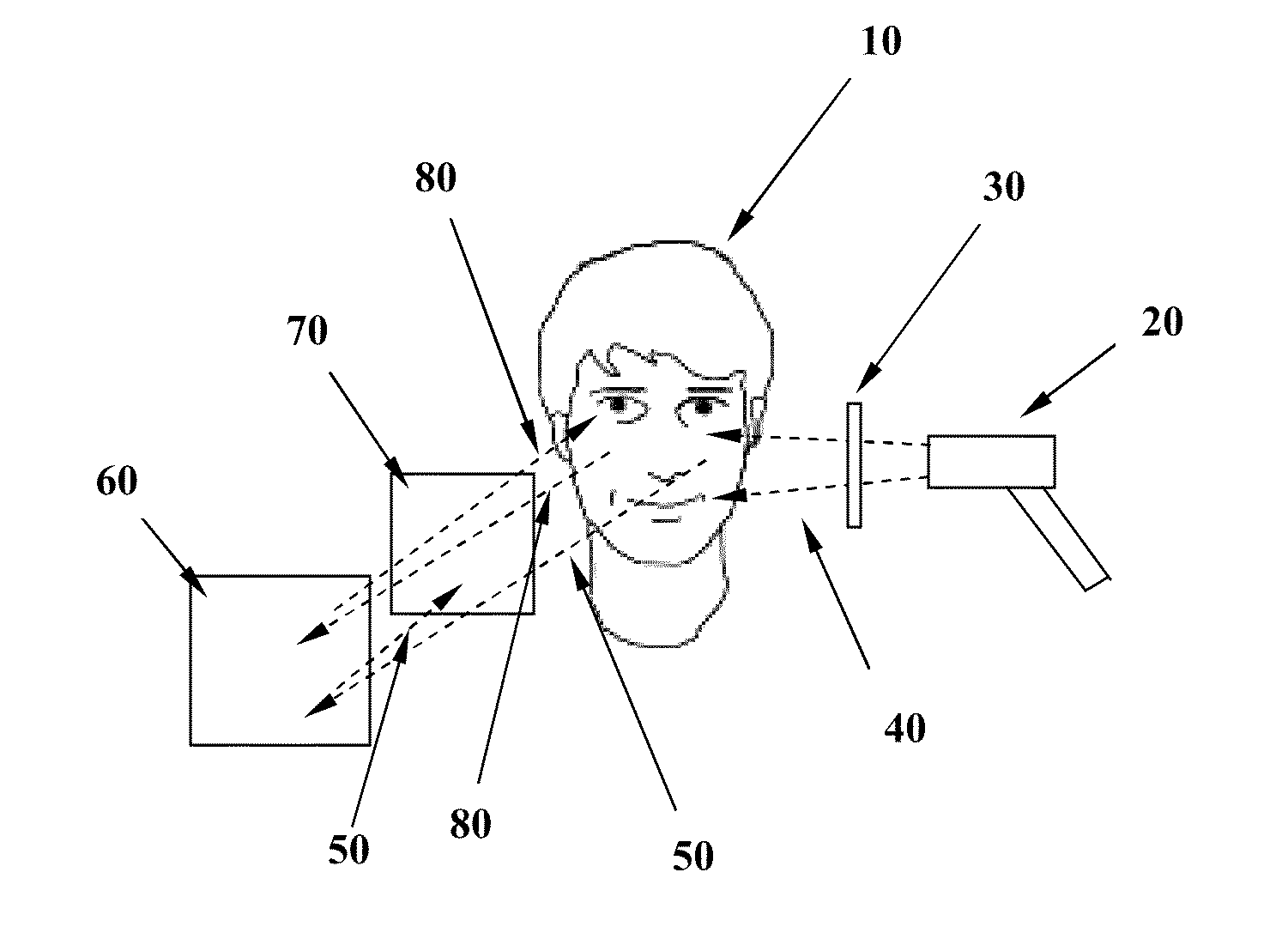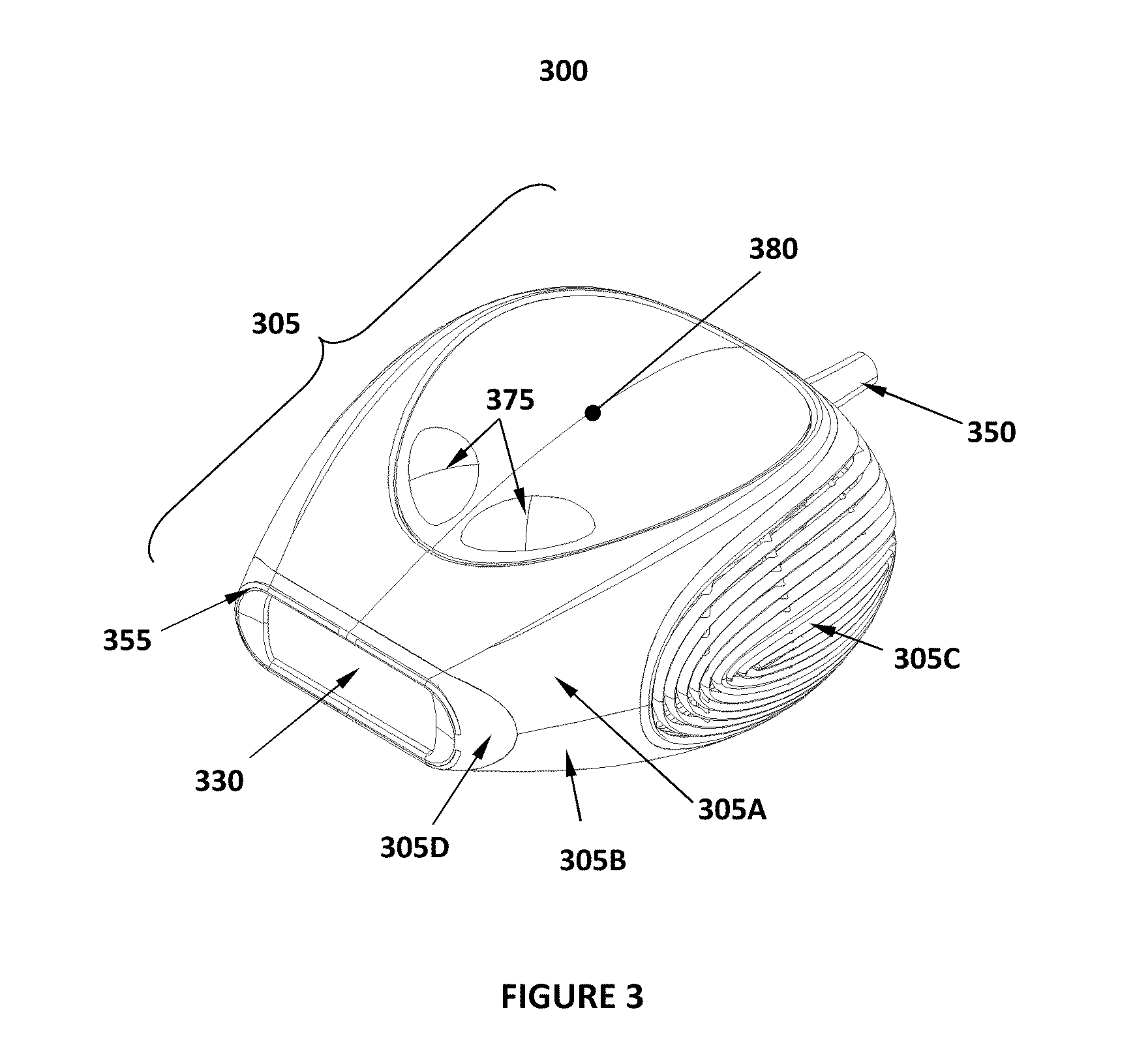Acne Treatment Method, System and Device
a technology for treating acne and skin conditions, applied in the field of dermatologic treatment devices and methods, can solve the problems of unattractive long-term use treatment, ineffective or undesirable in some individuals even for short-term use, and based devices and techniques, so as to reduce the development of new lesions, reduce the treatment time, and avoid any hyperpigmentation of the skin
- Summary
- Abstract
- Description
- Claims
- Application Information
AI Technical Summary
Benefits of technology
Problems solved by technology
Method used
Image
Examples
first embodiment
[0049]Referring next to FIGS. 3 and 4, a first embodiment of a treatment device in accordance with the invention can be better appreciated. In particular, the device 300, shown in exploded perspective view in FIG. 4, comprises a housing 305 which in an embodiment, is comprised of a top housing 305A, a bottom housing 305B, a vent 305C and a nosepiece 305D, which provides an output aperture 305E. For the illustrated embodiment, the housing is configured to be hand held. It will be appreciated that other embodiments need not be entirely hand held, but can comprise a base station and hand-held head unit connected by an umbilical, or any other suitable physical arrangement.
[0050]Inside the housing 305 of the illustrated embodiment is a circuit board 315 onto which is mounted a light source 310, which can, for example, be one or more devices such as an LED, an LED array, or other suitable source including one or more laser diodes, flashlamps, or other light emitting devices. In at least s...
second embodiment
[0075]Referring now to FIGS. 9 through 11, an exemplary second embodiment of a treatment device in accordance with the invention can be better appreciated. In particular, the device 400, shown in exploded perspective view in FIG. 11, comprises a housing 405, which is comprised of an upper housing 405A, a lower housing 405B, cap 405C, which provides cap aperture 405D, and a nosepiece 405E, which provides an output aperture 405F. Suitable materials for the housing 400 include, but are not limited to, polymers and polymer blends, such as a polycarbonate / ABS (acrylonitrile butadiene styrene) blend, and it will be recognized by those skilled in the art that other materials, such as light-weight metals and other plastics can also be utilized for the housing. In the illustrated embodiment, the bezel or front of the nosepiece 405E is made of nonconductive material such as plastic, although in other embodiments the nosepiece 405E can be made of metal or metalized plastic.
[0076]Although treat...
third embodiment
[0113]A schematic of a third preferred embodiment of the device is shown in FIG. 18. In this embodiment, the device is contained within a housing 80 that includes an output window 10 through which intense violet-blue light can be delivered to a region of the skin. Prior to the light emission, window 10 is placed in intimate contact with the region of skin to be treated. During the emission, window 10 is held in contact with the skin. After emission, the window can be repositioned to a new region of skin and the treatment can be repeated.
[0114]One purpose of window 10 is to transmit the light produced by the light source 20 to the region of the skin to be treated. Therefore, window 10 must be formed of a material transparent to the therapeutic wavelengths produced by light source 20. Sapphire is a preferred material but other transparent materials can be used, including fused quartz, fused silica, polymeric materials, opal glass, or glass. By transparent it is meant that the material...
PUM
 Login to View More
Login to View More Abstract
Description
Claims
Application Information
 Login to View More
Login to View More - R&D
- Intellectual Property
- Life Sciences
- Materials
- Tech Scout
- Unparalleled Data Quality
- Higher Quality Content
- 60% Fewer Hallucinations
Browse by: Latest US Patents, China's latest patents, Technical Efficacy Thesaurus, Application Domain, Technology Topic, Popular Technical Reports.
© 2025 PatSnap. All rights reserved.Legal|Privacy policy|Modern Slavery Act Transparency Statement|Sitemap|About US| Contact US: help@patsnap.com



